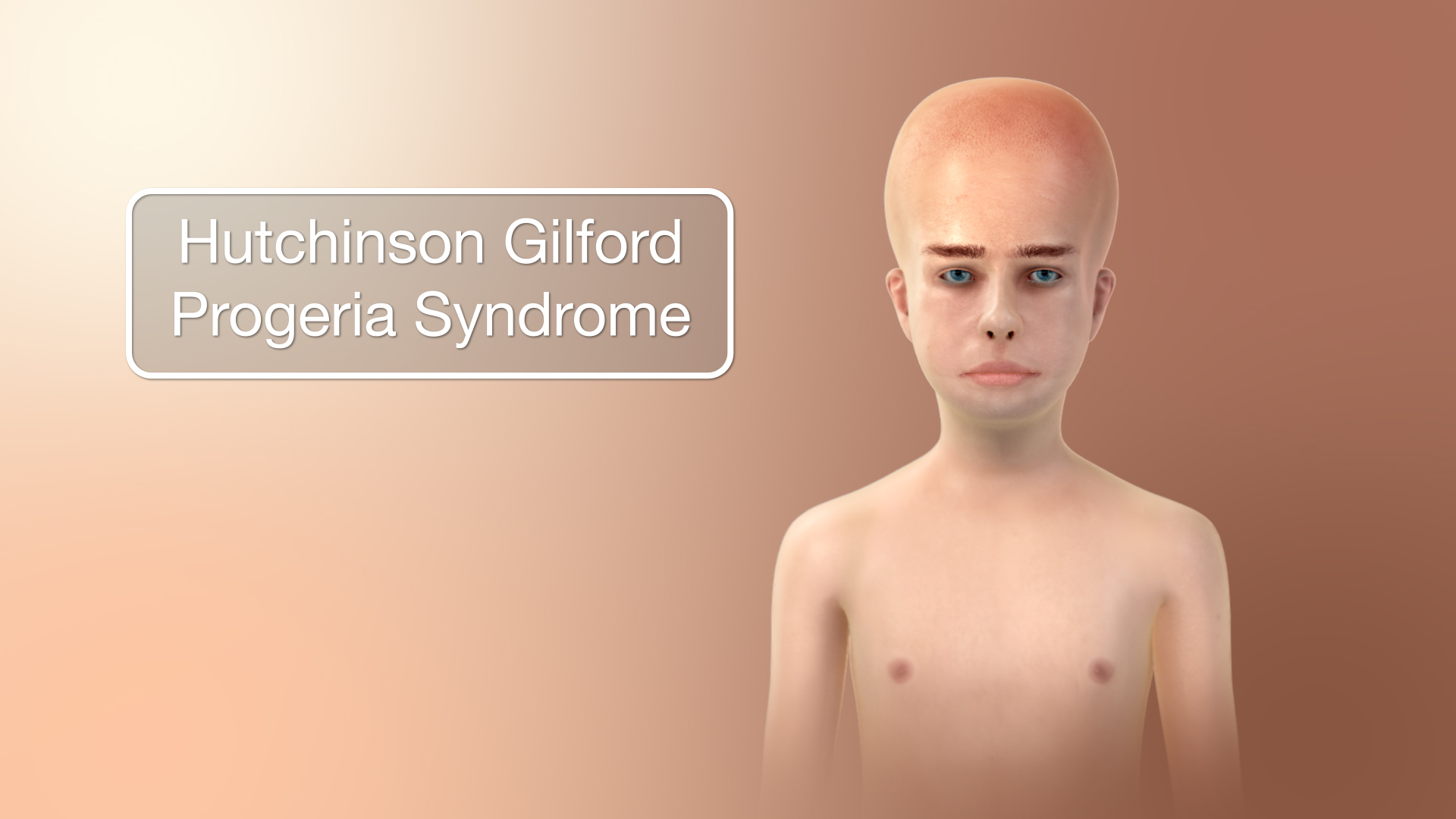Hutchinson-Gilford Progeria Syndrome or HGPS is an extremely rare and fatal genetic disorder, which causes rapid aging in children, in the initial two years of their life. Due to this genetic disorder, such children have an average life expectancy of 13 years. The genetic disorder is known to affect children irrespective of their gender, and ethnicity. As per medical resources, this disease is known to affect about one in 20 million people. Other similar syndromes such as Wiedemann-Rautenstrauch syndrome and Werner syndrome do tend to be inherited. These rare syndromes are also known to cause rapid aging and a shortened life span.

Symptoms
The signs and symptoms of this disease are as follows:
- Below average height and weight
- Slowed growth
- Narrowed face, beaked nose, thin lips, and lower jaw
- Visible veins
- High-pitched voice
- Hair loss including eyebrows and eyelashes
- Thinning, wrinkled and spotty skin
- Incomplete closure of eyelids
- Prominent or protruding eyes
- Disproportionately large head
Some health issues which are associated with the HGPS are:
- Cardiovascular diseases, blood vessel-related diseases
- Hearing loss
- Stiff joints
- Dislocation of hip
- Resistance to insulin
- Fragile bones and skeletal abnormalities
- Abnormal or decayed tooth formation
- Hardening of the skin, similar to scleroderma
- Loss of muscle mass
- Loss of fat under the skin
Though the growth of progeria affected children is slow in their first year of life, intelligence and motor development remain normal.
Causes
As per various medical resources, the reason behind Hutchinson-Gilford Progeria Syndrome is a single gene mutation. This mutation arises in the LMNA or Lamin A gene, which is responsible for synthesizing a protein that holds the nucleus of the cell together. The protein is responsible for the structural integrity of the cell. When a mutation in the gene arises, making the cell’s structure weak, an unstable form of Lamin A is synthesized, which is known as progerin. This progerin makes the cell unstable and is assumed to lead the aging process in HGPS.
HGPS is a disorder that affects genes, though it is not assumed to be hereditary by medical professionals and resources. This type of gene mutation, which is responsible for HGPS, is extremely rare. If one of the children is affected by HGPS, the chances of the second one getting affected are pretty low.
Treatment
As per medical resources, the cure for the disease isn’t available as of now and some promising research is being carried out, which can lead to successful outcomes. However, treatment for the management of the disease and its symptoms is available. Doctors are seen to recommend treatment options depending on the patient’s condition and symptoms that include aspirin, statins, physical therapy, etc.
Progeria is considered to be a fatal syndrome and thus its outlook is gruesome. Associated diseases that emerge along with the disease are treated to provide some relief to the patient.
Disclaimer: The information in no way constitutes, or should be construed as medical advice. Nor is the above article an endorsement of any research findings discussed in the article an endorsement for any of the source publications.








